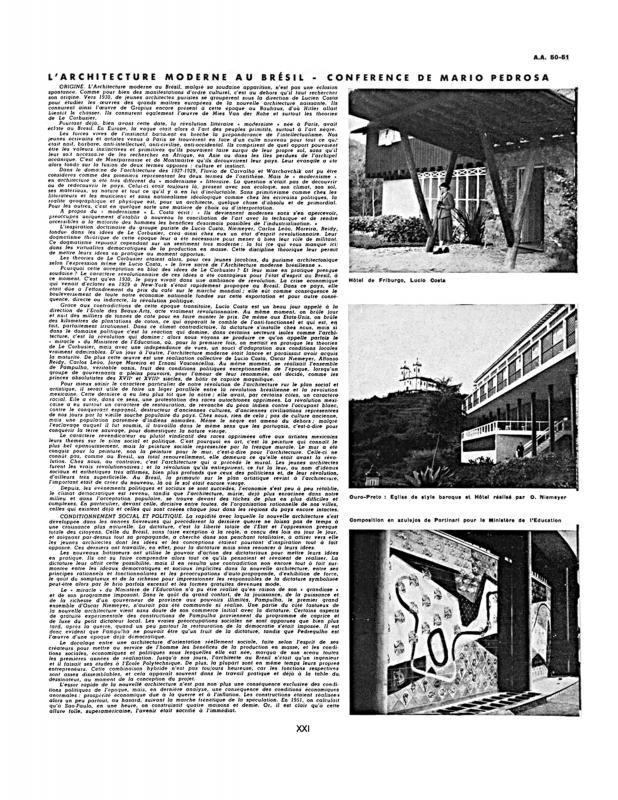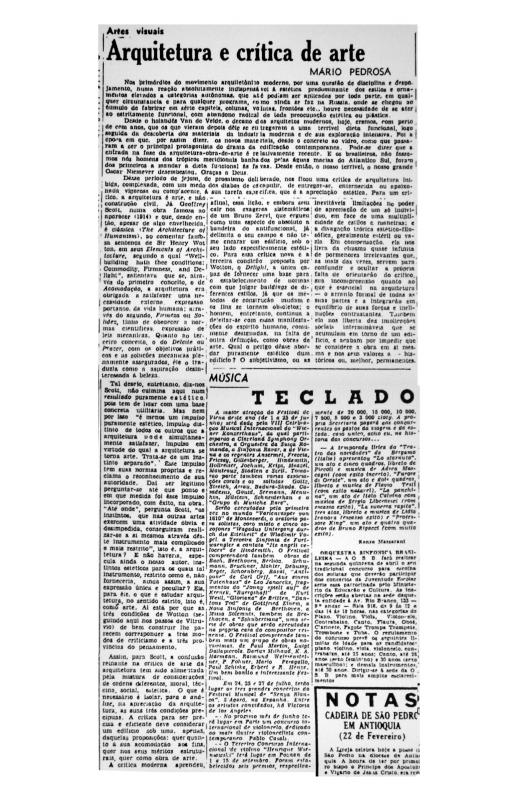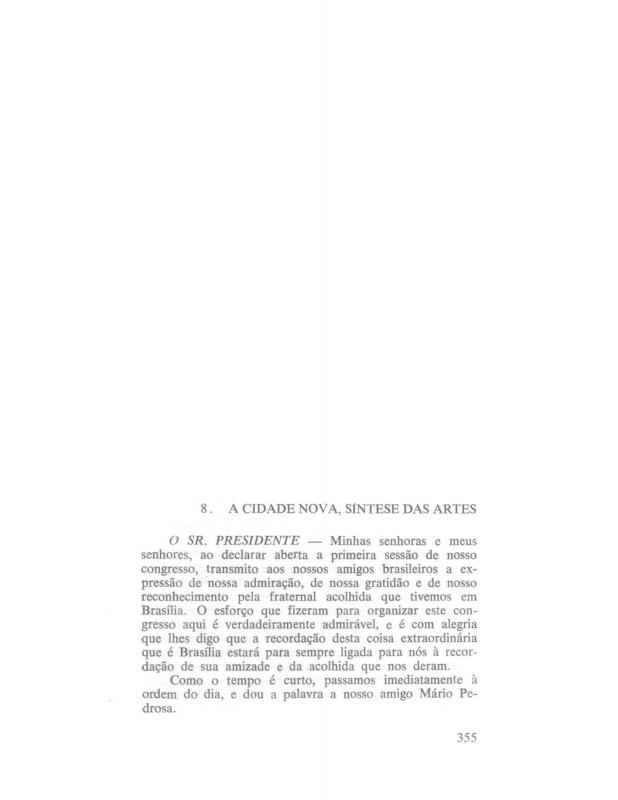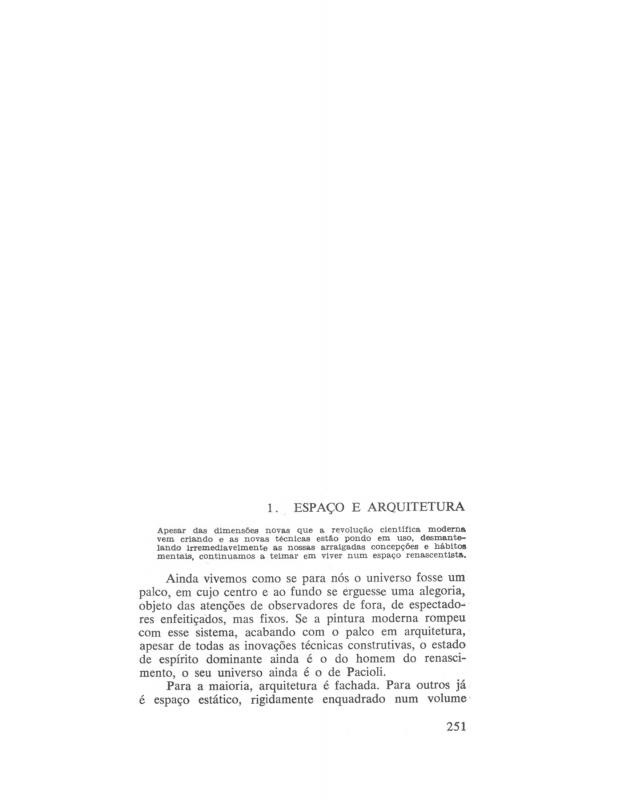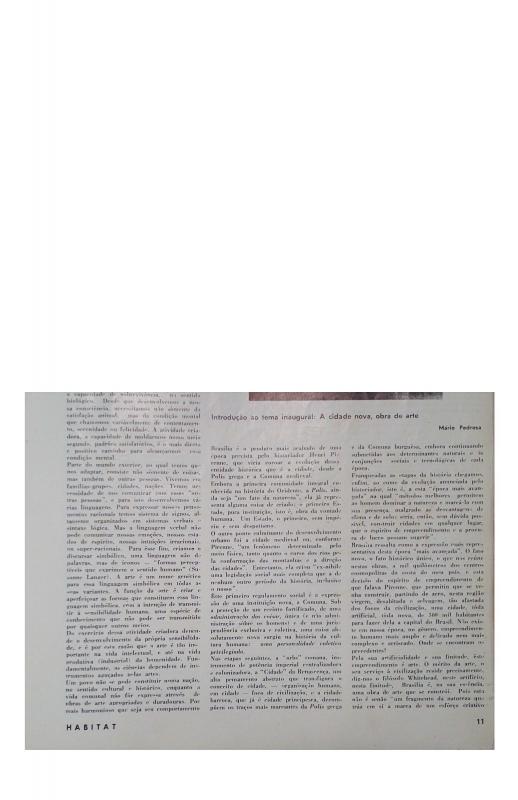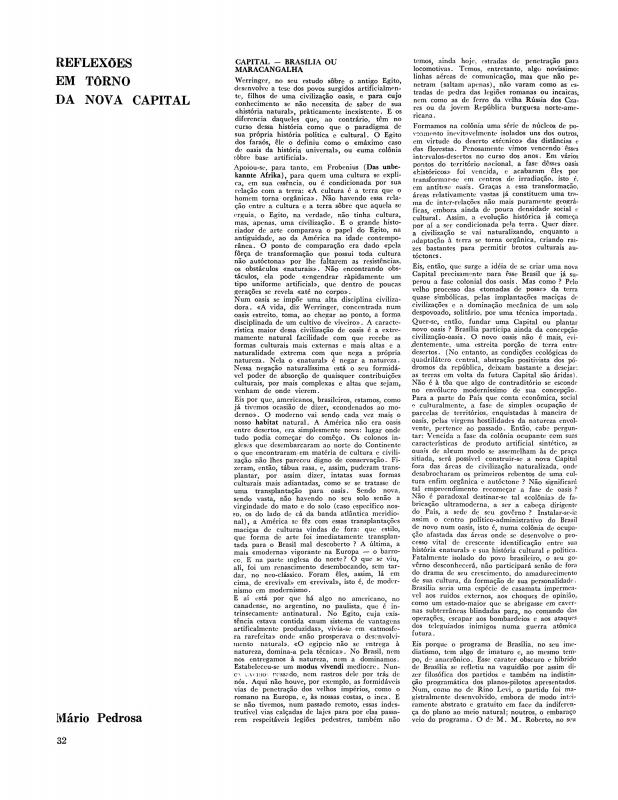This text written by Mário Pedrosa shortly after the celebrated Congresso Extraordinário Internacional de Críticos de Arte (1959) affirms the need to establish a new critical approach in which architecture is envisioned on the basis of essentially artistic principles related to the spatial perception of the viewer or of the one who enjoys the work. Pedrosa uses the words of architect Oscar Niemeyer, who makes use of such methods in his very conception of the project, a conception in which the autonomous intentionality of the visual arts is brought to bear on architecture.
Intellectual and politician Mário Pedrosa (1900–1981) was unquestionably the pivotal figure in twentieth-century Brazilian art theory and criticism. He was the editor of the international politics section of Diário da Noite. He joined the Brazilian Communist Party (PCB) in the twenties, and in 1932, he was arrested for his political activism as a Trotskyite. During the Estado Novo under Getúlio Vargas, Pedrosa lived in exile in France and New York, returning to Brazil after World War II. A contributor to Correio da Manhã, he later founded the weekly Vanguarda Socialista due to his anti-Stalinist position. For his doctoral thesis in aesthetics entitled “Da natureza afetiva da forma na obra de arte” (1949) presented at the Faculdade de Arquitetura (Río), he made use of his background in philosophy and Gestalt psychology. He was one of the founders of International Association of Art Critics (AICA) (1948) and he helped organize the International Congress of Art Critics (Brasília, 1959). From 1950 to 1954, he wrote a column on art for Tribuna da Imprensa,and in that decade, he was a member of the organizing committee for the second and third São Paulo Biennials (1953 and 1955 respectively) before becoming director of the MAM-SP from 1961 to 1963. He was the secretary of the National Council of Culture during Jânio Quadros’s brief term as president. During the military dictatorship in Brazil, he sought exile in Chile where he directed the Museo de la Solidaridad in Santiago. After the coup under Pinochet (1973), he went to Havana where he served as the secretary of the Museo de la Resistencia Salvador Allende. He did not return to Brazil until 1977, at the beginning of the amnesty. In 1980, he was the first person to sign the manifesto founding the Partido dos Trabalhadores (PT). Part of his vast library (some eight thousand volumes) is available at the Biblioteca Nacional in Río de Janeiro.
For further reading, see the following texts by Mário Pedrosa: “Abstração ou figuração ou realismo?” (ICAA digital archive doc. no. 1085648), “L'architecture moderne au Brésil” (doc. no. 1086489), “Arquitetura e crítica de arte” (doc. no. 1086553), “Arte Ambiental, arte pós-moderna, Helio Oiticica” (doc. no. 1110622), “A cidade nova, síntese das artes” (doc. no. 1086503), “Espaço e arquitetura” (doc. no. 1087020), “Introdução ao tema inaugural: A cidade nova, obra de arte” (doc. no. 1110409), “Intróito à Bienal” (doc. no. 1090338), “MAM: reconstrução” (doc. no. 1111078), and “Reflexões em torno da nova capital” (doc. no. 1086728).

